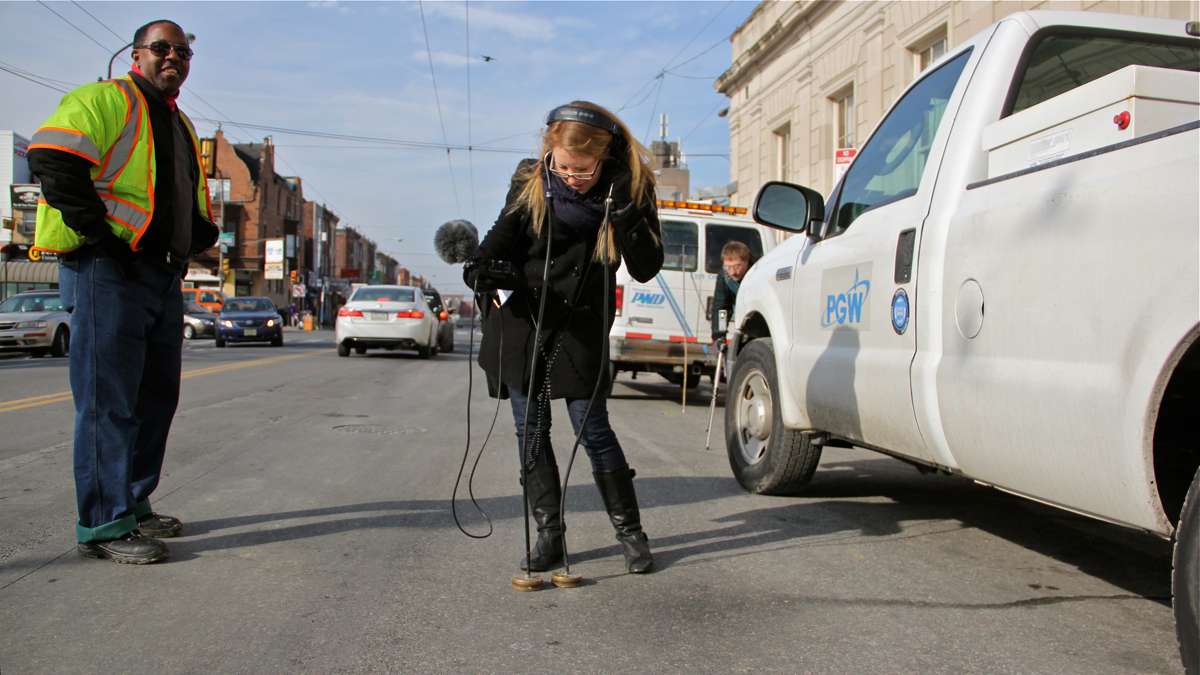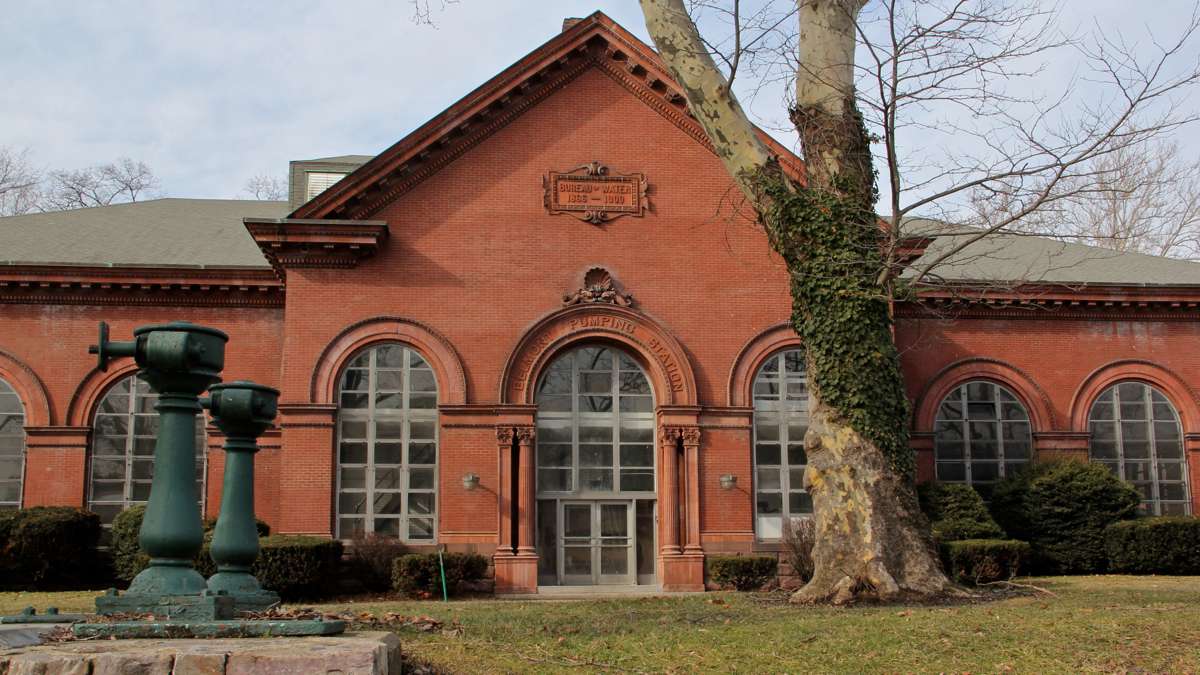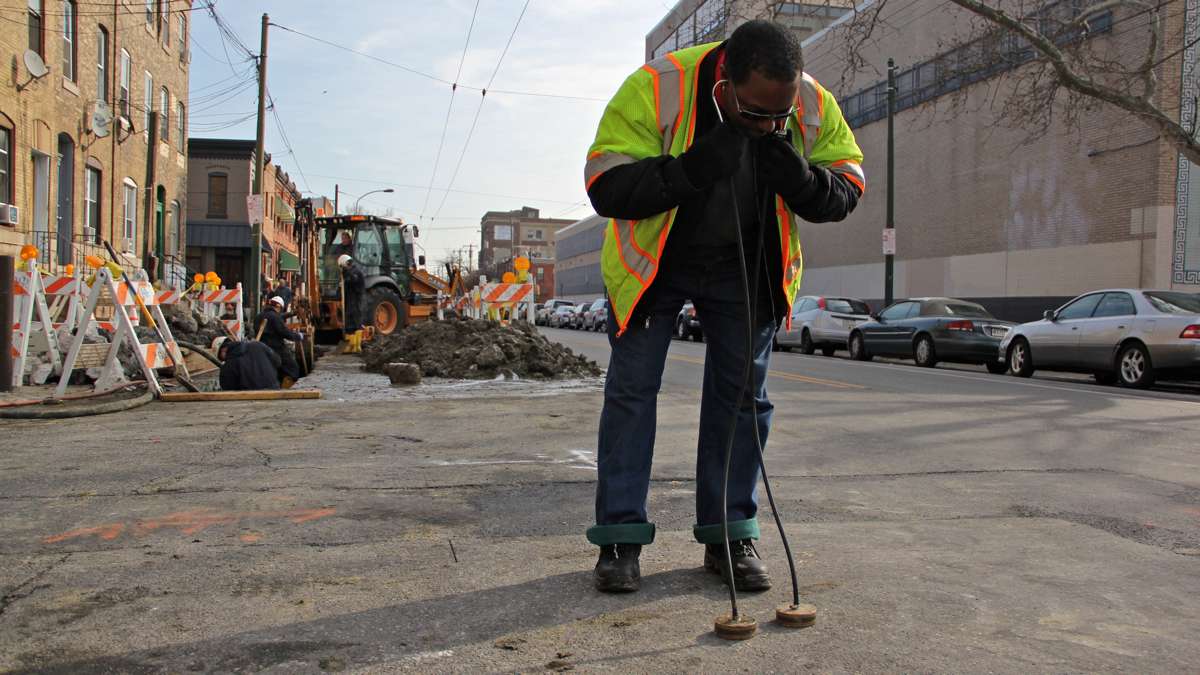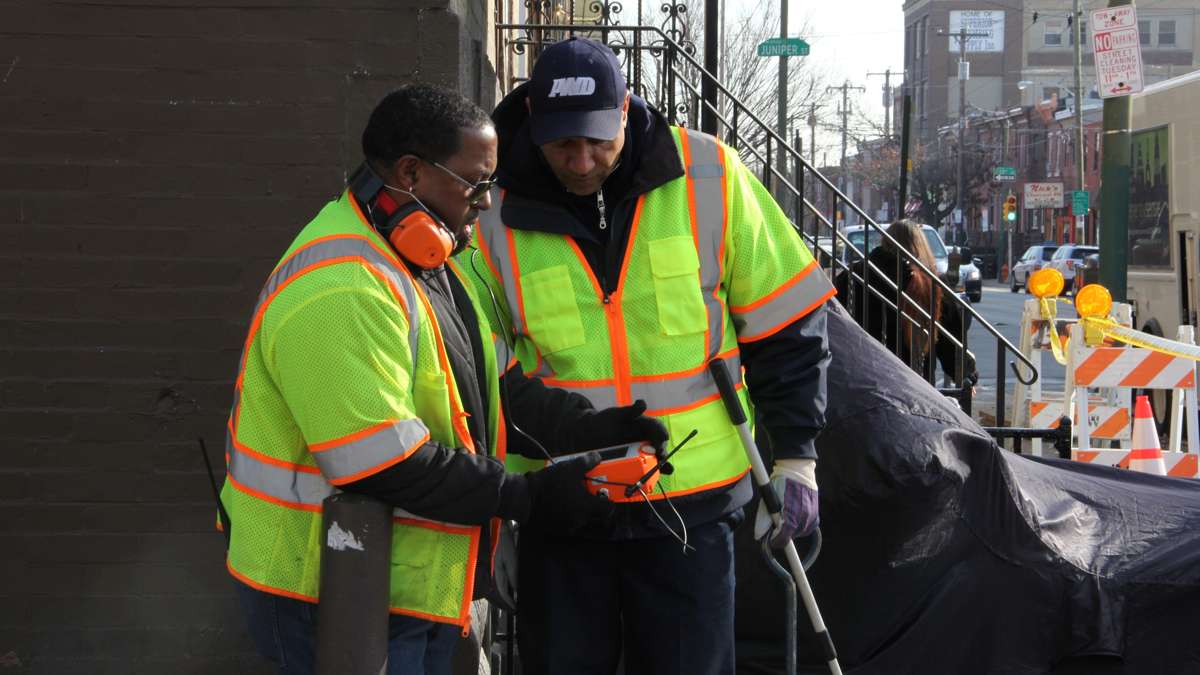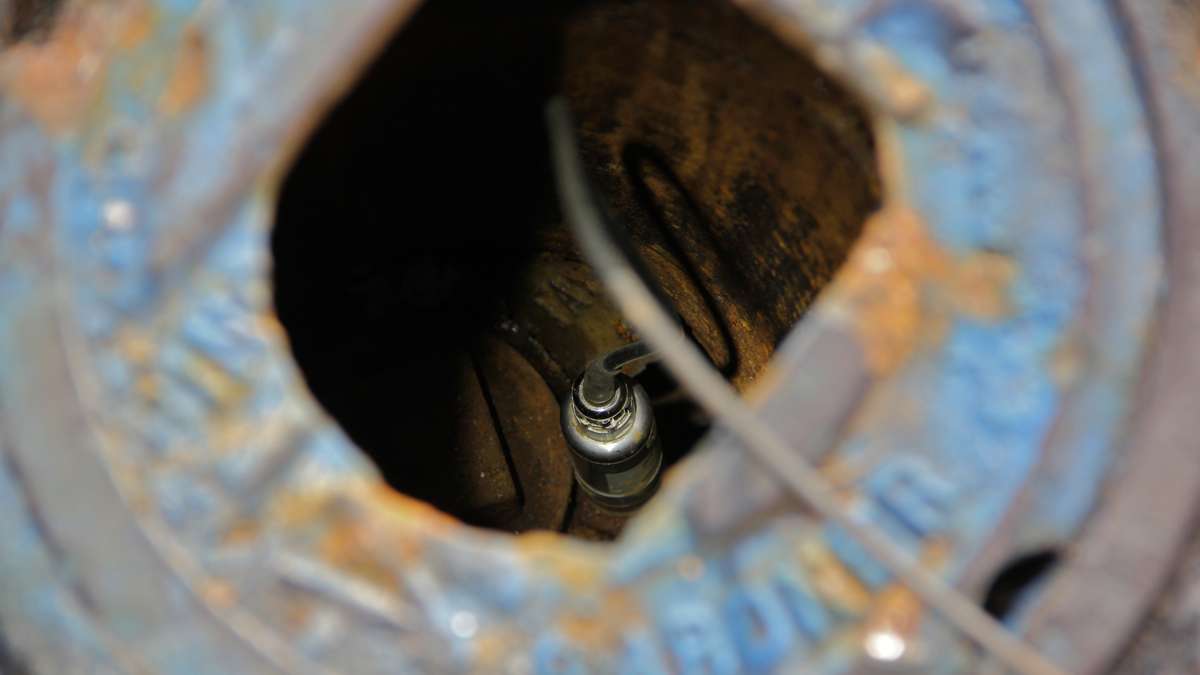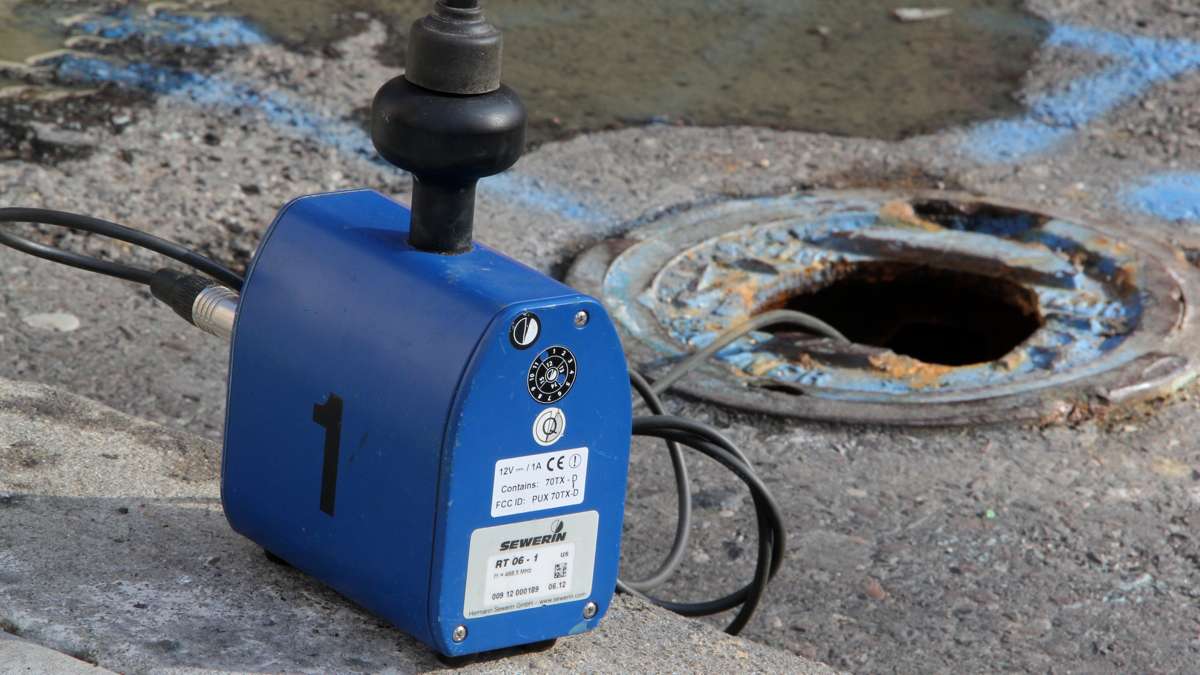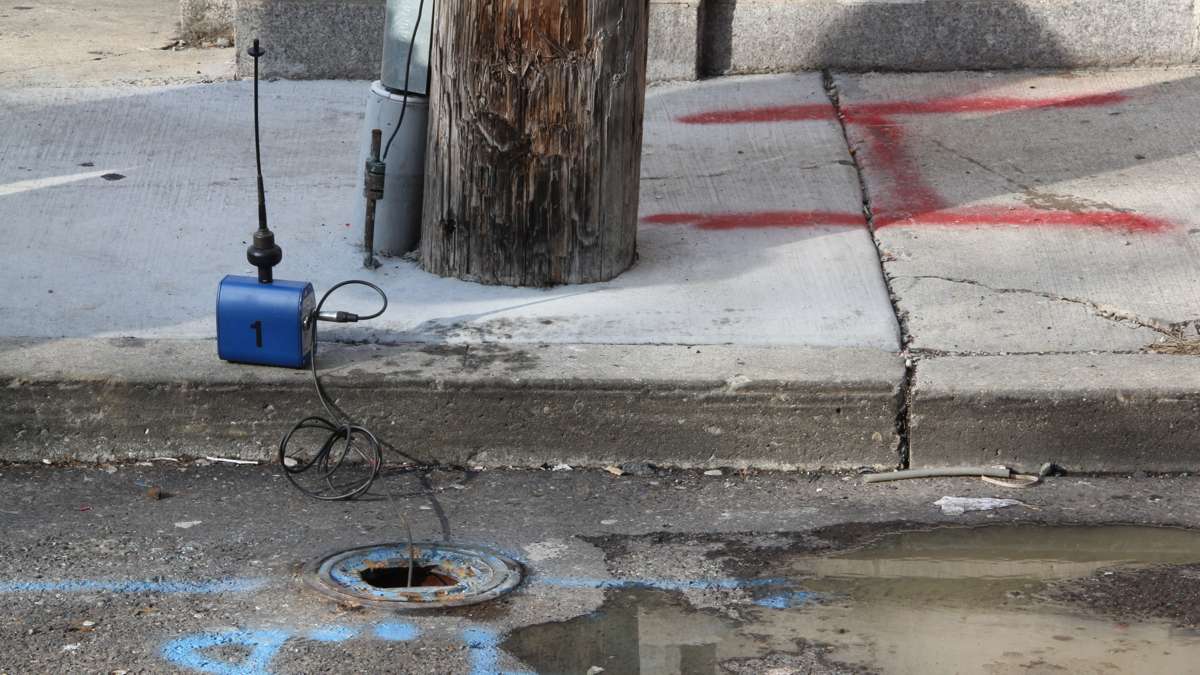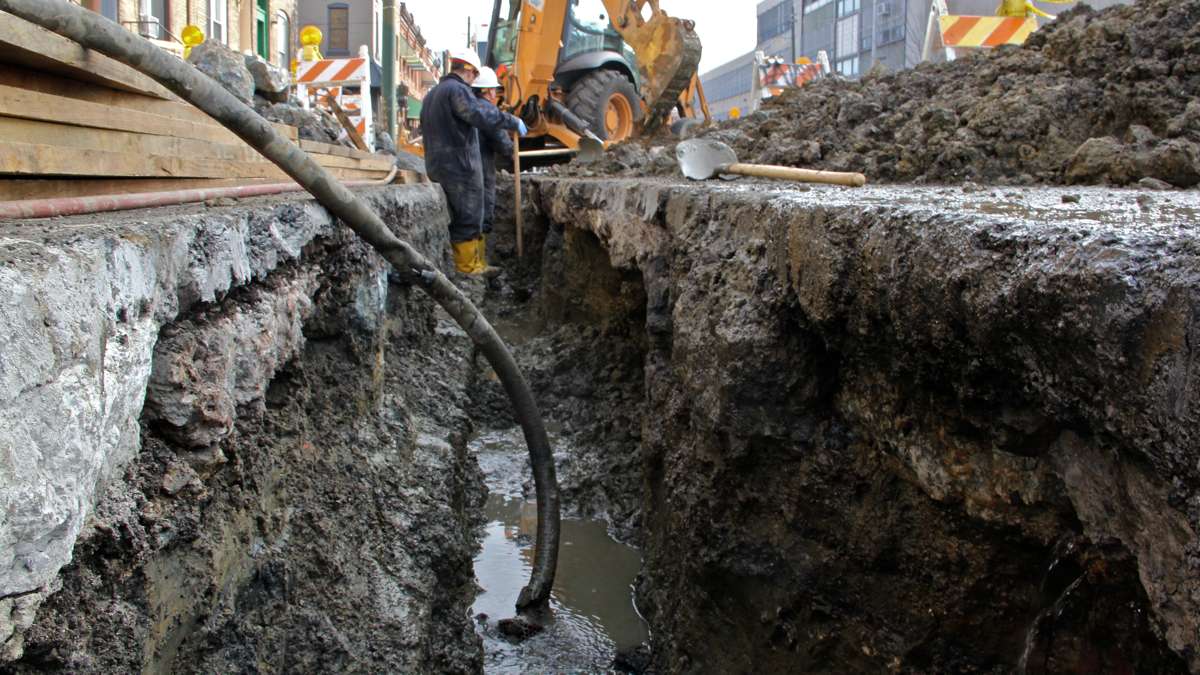With nearly 200-year-old pipes, Philly’s water leak rate stays high
ListenMore than 60 million gallons of drinking water leak out of Philadelphia’s water pipes…every day.
Every day, the Philadelphia Water Department pumps about 250 million gallons of water out of the Schuylkill and Delaware Rivers. About 60 million gallons of that never reaches customers, seeping instead into the ground thanks to several thousands of leaks that plague the city’s underground pipe network.
When the water that reaches customers but isn’t paid for is added in, total water losses represent nearly 40 percent of the city’s drinking water supply. That costs customers in the neighborhood of $50 million a year in lost revenue and unnecessary treatment costs, and wastes enough energy to power about 4,000 homes.
Though the city is considered a national leader in assessing water losses and finding leaks, old pipes and city policies mean the water department has hit a plateau in leak reduction efforts.
Leak detectors stick to old-school methods
Two big leaks under the Vine Street Expressway each gushing 100 gallons of water a minute for a decade by the time they were ferreted out in 2007.
Leaks that big can flood basements or cause structural damage to streets or buildings, but most of the city’s water loss comes from smaller leaks, many of which could send water into the ground for years without anyone noticing.
Philadelphia launched dedicated leak detection units in 1979 to find these insidious leaks, and today crews survey a third of the city’s 3,000 miles of water pipes every year.
On a recent morning, I accompanied a leak detection unit to Snyder Avenue, in South Philadelphia, where a gas company crew discovered a leak while doing maintenance work below street level.
Philadelphia Water Department leak detector Jassen Smallwood stood in the middle of the street, listening to the underground water pipe to pinpoint the location of the leak.
He used a pair of geophones, long pieces of black tubing with an earpiece at one end and a metal disk at the other.
“Just like a giant stethoscope they use in a doctor’s office, but bigger,” Smallwood said.
To find the leak, he placed the disks on the pavement and listened to the water flowing through the pipe more than three feet below street level.
Smallwood walked down the street listening with the geophones, and amid the clatter of a water pump and traffic noise, located the leak in just a few minutes.
“You gotta have good ears, if you didn’t have good ears these would be no good,” Smallwood said.
His crew used a higher-tech electronic device to find the general area where the leak was, but for this fine work, Smallwood said his ears and the geophones are faster than newer technology.
“As we say, I could hear a mouse pissing on cotton,” Smallwood said.
You can’t fix what you don’t measure
In 2000, Philadelphia became the first U.S. city to adopt a water audit program that is now considered the gold standard.
“They have a tremendous track record of innovative efforts to tackle water losses,” said the Delaware River Basin Commission’s David Sayers. In 2012, the Commission started requiring all the municipalities in the basin to conduct water audits.
Nationwide, droughts in the West, tightening public budgets and aging infrastructure have drawn attention to water leakage and nudged more cities to adopt these water audits.
Sayers said though Philadelphia is an early adopter, it still has the third highest water leakage rate among the 50 largest cities in the basin. Wilmington and Camden are the only two that are worse.
“Given their fundamentals of an old system, they really have some significant challenges,” Sayers said.
Among cities that complete a verified audit outside of our region, 65 to 80 percent of the water in Pittsburgh, Washington, D.C., and Cincinnati reaches customers and is paid for, compared to about 60 percent in Philadelphia. In the desert city of Las Vegas, 95 percent of water reaches customer taps.
Water professionals hate citing percentages when describing water leakage, as they say it doesn’t provide a clear picture of change over time or the comparative health of different systems, but the numbers are still made available.
Leaky pipes from the 1800s
“When you look at the growth of the city, there was a major growth period that occurred after the Civil War, from the 1870s through the 1920s, so of course most of the piping was installed then,” said the Philadelphia Water Department’s water loss guru George Kunkel.
Despite replacing about one percent of its pipes per year, the city has some of the oldest water infrastructure in the country. The oldest pipe still in use in the city is from the 1820s, but officials says they will soon start accelerating the rate of pipe replacement with increased funds.
Overseeing this old system has made Kunkel a nationally recognized authority on water losses. (In fact, he wrote a book on the topic, and likes to joke that for a book about water, it’s a little dry.)
Under Kunkel’s leadership, the city started its water audits and turned down its water pressure, which helps limit leaks. In mid-to-late 2000, Philadelphia reached historic low leakage rates.
“Since that time we’ve plateaued somewhat,” Kunkel said. “So we’re challenged now to get to that next level of reduction.”
Kunkel said the water department is hamstrung by a city policy that dictates that the water pipes connecting mains in the street to houses and businesses aren’t owned by the city, but by property owners.
That means when they leak, the city doesn’t have authority to fix them. Because water is metered at the home, not at the connection with the water main, leaks do not show up on water bills. Homeowners may not know about leaks, or even if they do, there’s little incentive to get them fixed.
Kunkel said the water department is weighing policy changes to help address that problem, including developing a pipe insurance or warranty program for homeowners, but has not made any recommendations yet.
WHYY is your source for fact-based, in-depth journalism and information. As a nonprofit organization, we rely on financial support from readers like you. Please give today.



